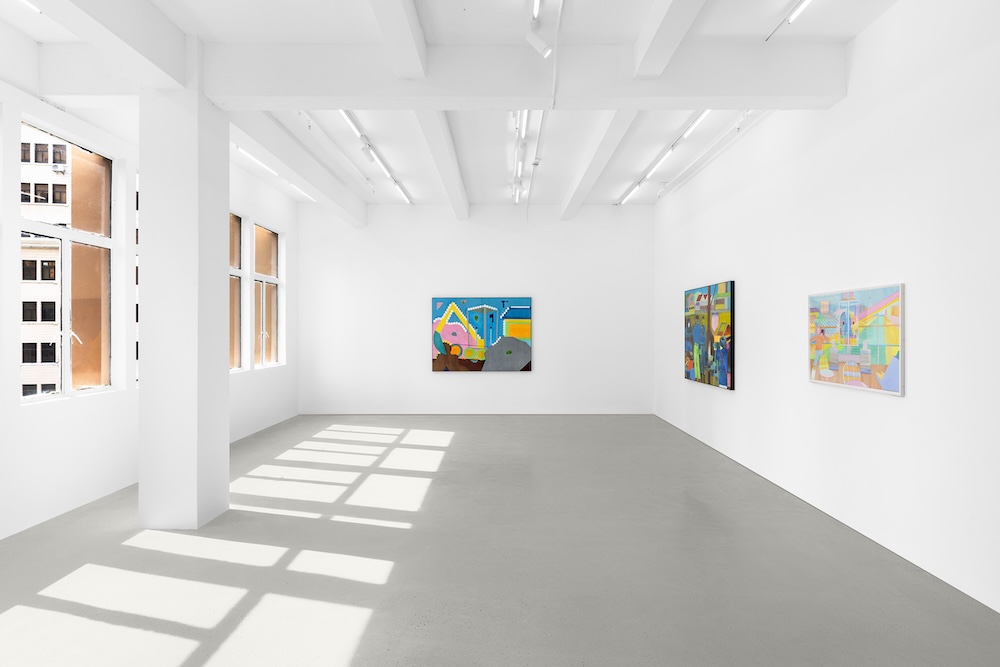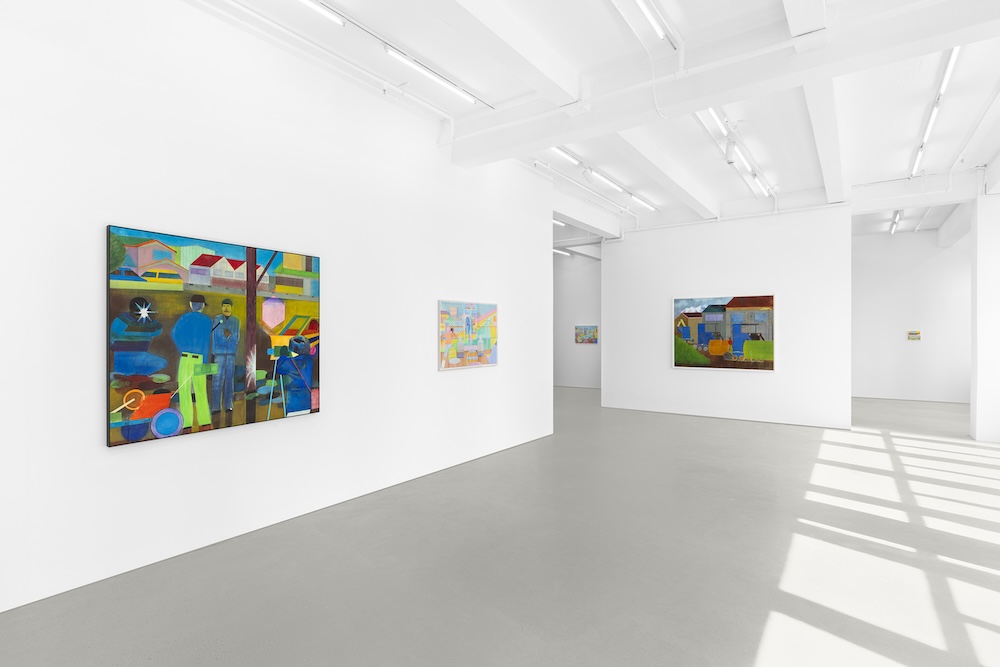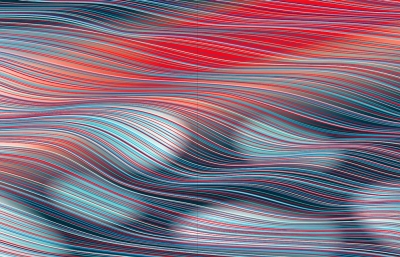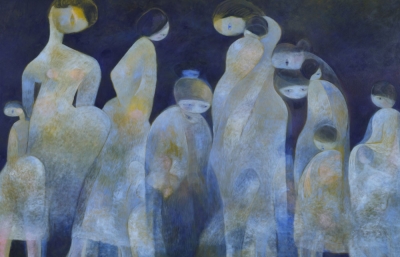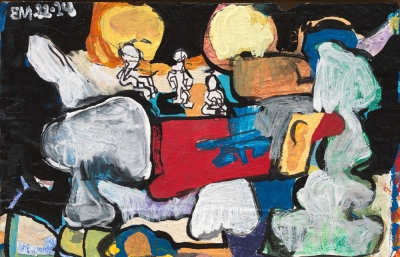Gallery Vacancy is pleased to announce artist Yuichi Yokoyama’s first solo exhibition in Shanghai, Yuichi Yokoyama 1994–2024, on view through August 24, 2024. As an artist, Yokoyama deliberately separates his manga from his paintings, but the distinctive connections between the two are what make his works interesting. According to the artist, he chose manga over painting as his means of artistic expression because manga is more important to him. However, in recent years, Yokoyama’s worldwide exhibitions not only included paintings in the traditional sense, but also showed a large amount of manga-related works as well as “Name,” manga sketches that are considered least important and displayable in Japanese manga tradition. To this day, Yokoyama’s manga practice has re-entered the scope of contemporary art institutions, considered as a specific painting genre originated in East Asian culture; hence, Yokoyama’s practice circulates beyond the form of manga tankobon, crossing over the fields of manga and painting.
What distinguishes Yokoyama’s manga from his paintings perhaps lies in legibility: the former can be read and interpreted with pleasure, whereas the latter are independent and complete entities composed of lines, color fields, materials, and texture. Observing the rhythm and groove contained in paintings as listening to music, evokes a different kind of joy. If you take out a frame or a page from Yokoyama’s manga, can it be considered a painting? Does Yokoyama's painting provide the same room for interpretation as the manga?
Over the course of painting, painters always seek to contain viewers in one pictorial frame, providing sufficient visual impact to convince viewers of the rationality in representation. Instead of revealing a single perspective, time and space interact fluidly in Yokoyama’s works, informed by manga reading. Yokoyama’s manga stands out with its exceptional painterly quality. Still, if a single panel is extracted, it hardly resembles a painting. For his manga always implies a continuity between panels, even if the facilitating visual break is removed; the interconnectivity constantly exists in formal and content coordination. Paintings, under Yokoyama’s intervention, appear to be complex, even though the compositions could be simple, each changing bit comprising rich details and information.
This is why Yokoyama’s paintings are unlikely to be incorporated into a manga as one panel; despite sharing the same visual language: dashing lines, exploding bubbles, and screentone, the approach is different. Nonetheless, Yokoyama’s originality manifests, which differentiates his works from that of Roy Lichtenstein: Yokoyama doesn’t reproduce and enlarge manga panels to replicate the viewing experience of billboard or movie screen; on the contrary, he employs the symbol, technique, and logics in manga to experiment with applying manga reading to formal construction in geometric shapes.
When viewers look at Yokoyama’s depictions of the sun, the rain, the snow, and the intricate, real yet alienated scenes, they realize that the abstraction is not the characteristic of contemporary art, rather from the more familiar and relatable manga. The artistic expression is stunning as the symbolic language of manga is introduced into painting, serving as a point of entry to interpret the work. The experience of reading manga helps ease the feeling of loss when confronted with paintings.
Intriguingly, Yokoyama’s painting employs a manga thinking process, which expands the possibility to interpret his works: the ambivalent visual elements could stem from both the artist’s observation and extraction from the everyday experience and his remaking of reality, like an otherworldly creator.
In the Untitled (2000) series, the artist depicts sunny paddy field after the rain, with the sun shining in exaggerated geometric shapes in all directions along the sharp lines, the black dots in the washed palette creating a steamy effect, and fine lines forming thick cumulus clouds above the horizon, which gives out a clue that a rain has just left. In another work, the sky darkens while rain drops hitting leaves to form a curtain of water. The third piece portrays amber-like geometric objects covered by snow which floats in a turbulent stream, a surreal scene to viewers. Similarly, the last work captures snowmelt: the tree trunk is warm and toasty under the sun, snow resembling giant rice grains turning into huge droplets, reflecting different shades of color. Through Yokoyama’s paintings, our senses become more receptive to the new perspectives and angles in this newly created world, prepared to move beyond the current world.
If Yokoyama’s manga creates an open and all-encompassing world for viewers, his paintings serve as a key to get into this world. Viewers can always use one form to better understand another in Yokoyama’s practice, either through the occasion of exhibitions or the inner stimulation from manga reading, depending on which field viewers value and situate.
In manga reading, viewers usually identify with characters to experience the fictional world; the characters Yokoyama created, however, adopt unconventional bodily forms in different geometric shapes with barely recognizable facial features. This intervention suggests a detour from everyday life, and through the curious lens of a group of outsiders, viewers get to relentlessly deconstruct and fictionalize the meaning of the familiar objects and scenes. To fully embrace the perspective of the characters means viewers can break free from the limitation and prejudice in the current world, following freely the lead of the artist.
Yokoyama first abstracts the reality of the figurative world into manga, and then treats this abstract world as the new reality; through his interpretation and transformation, the artist accomplishes a series of impossible feats of creation. For viewers who follow his narratives, they can’t help but apply the new order to the conceived old world, attempting to subvert the existing structure. Such is a game that Yokoyama enjoys playing throughout almost all of his works.
For instance, in Color Engineering (2004) series: Color Engineering episode 3 reveals the building process of different types of human dwelling space. The shape and structure, though appear to be familiar houses, don’t actually perform the function of housing; together, they form a quasi-residential area, whereas they become a completely foreign landscape to viewers. In Color Engineering episode 5, Yokoyama constructs an installation employing an alternative logic to the human world; the mountains form a circle, connected by triangle glass walls. The mountain tops are carefully trimmed to unify with the glass height; these perfectly fitted parts are held together to become a reservoir, waiting for the rain. Just like the characters in Color Engineering episode 15, viewers are also clueless about what the three pictures are and have to be susceptible to any fantastical explanations offered by the artist, relinquishing control and liberating from the old order, and thus creating more room to understand painting.
Therefore, exhibitions such as Yuichi Yokoyama 1994–2024 are crucial in introducing viewers who are open to the form of manga into the world view created by Yokoyama. In this case, exhibitions don’t necessarily bring forth the most inspiration for manga fans, but for those who don’t have a fixated understanding of space and geometric forms. The exhibition is an invitation for the adventurous who are willing to follow the works of Yokoyama to explore a new, imaginary realm. —Hu Xiaojiang














